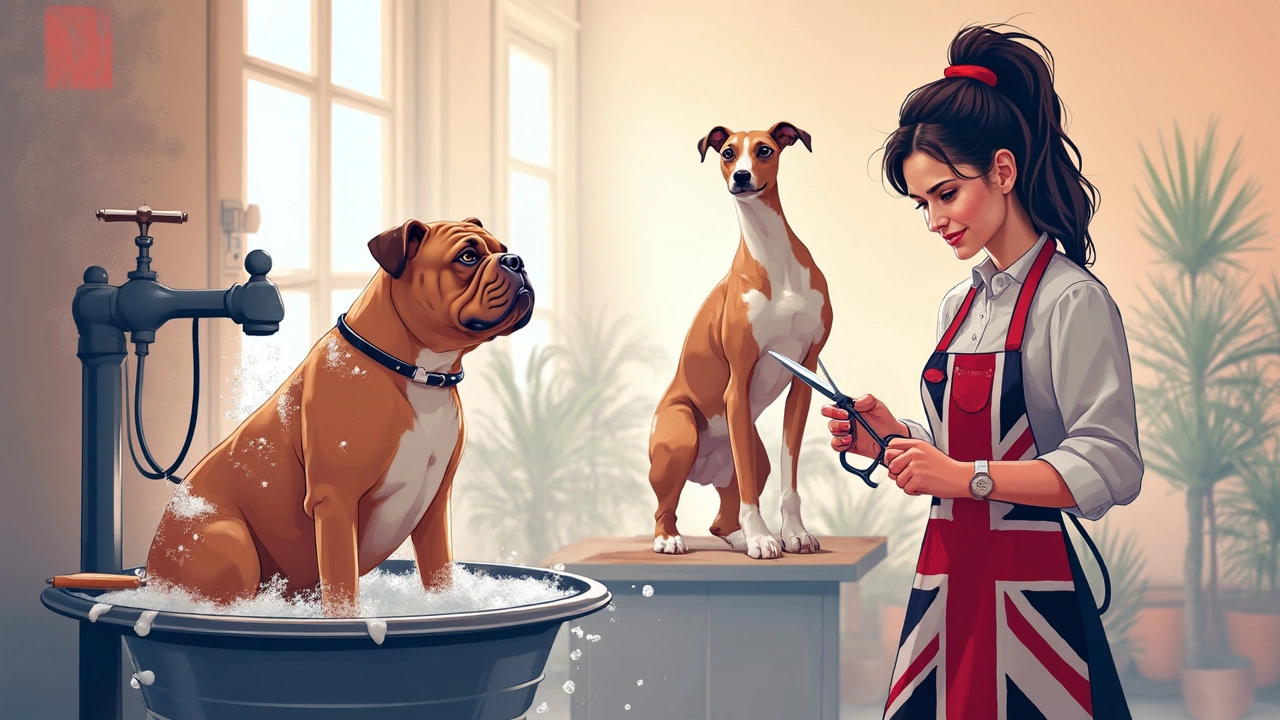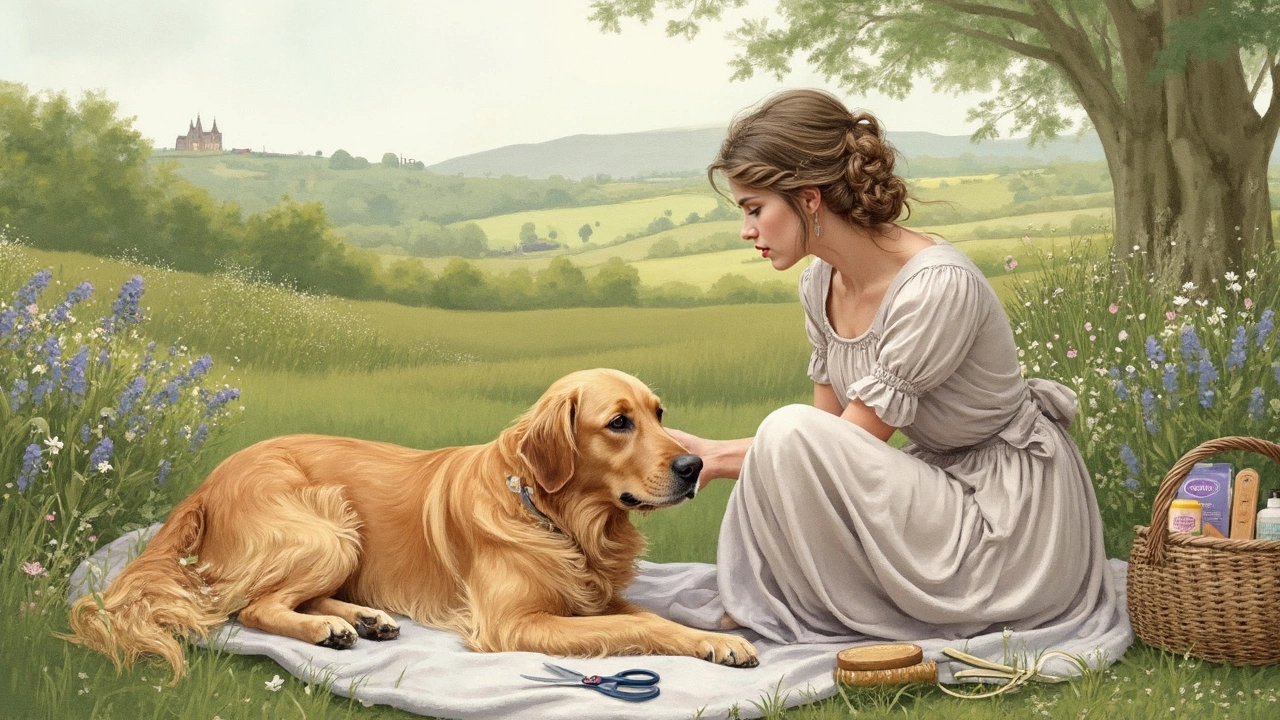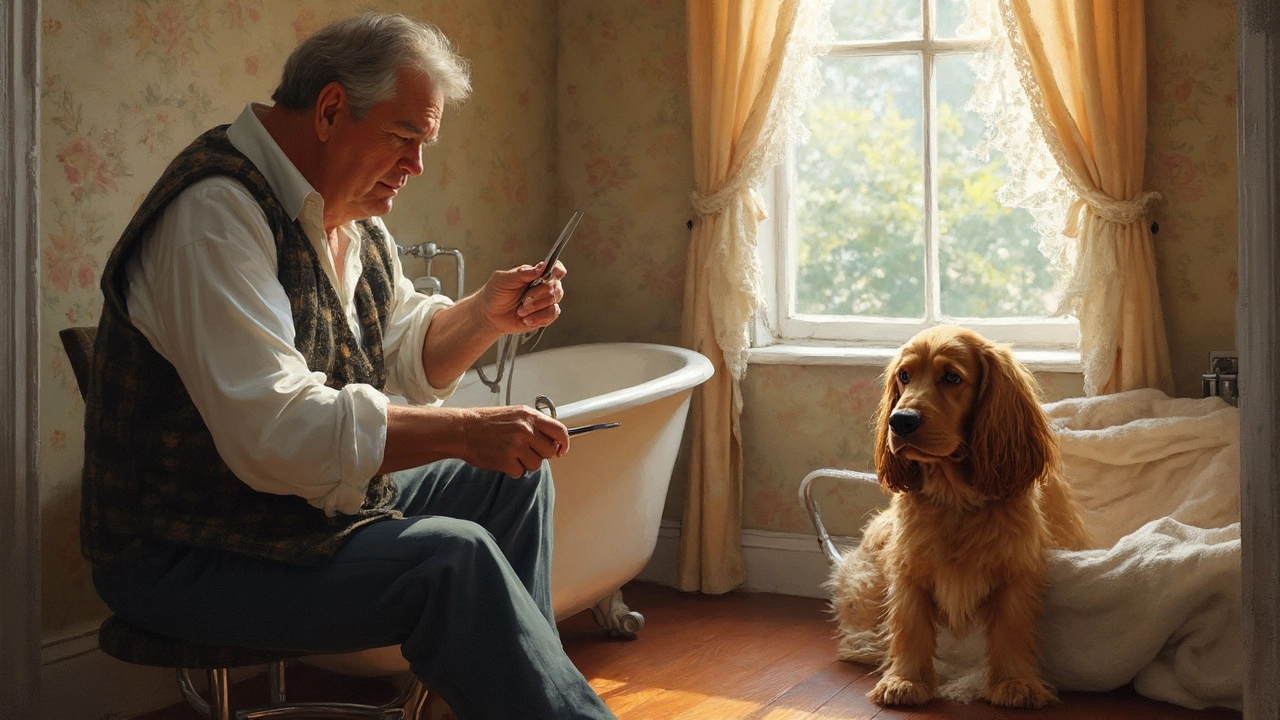When it comes to dog grooming, one of the first questions that might pop into your head is whether to wash or cut first. There's actually more to this than meets the eye, and understanding the nuances can make a big difference in the outcome. Whether you're trimming your furry friend at home or just curious about handovers to your trusted groomer, let's break it down.
Some groomers prefer to cut first, especially if the dog's coat is heavily matted or tangled. Trimming these problem areas before wetting can prevent further knotting. Plus, it could save you some time—less fur means less to wash, right?
On the flip side, washing first removes dirt, debris, and natural oils, offering a clean canvas for the cut. A clean coat can make the trimming process smoother and more precise. But be careful! Wet fur can sometimes hide those troublesome knots, making them hard to spot.
- Grooming Preparation
- Cutting Before Washing: Pros and Cons
- Washing Before Cutting: Pros and Cons
- Expert Tips for a Smooth Grooming Session
- Choosing the Right Products and Tools
Grooming Preparation
Before jumping into the nitty-gritty of dog grooming, remember that proper prep can make a world of difference. Imagine heading to the hairdresser without brushing your hair—sounds like chaos, right? The same goes for our furry pals.
Gather Your Tools
The first step is all about getting the right tools ready. Think brushes, combs, scissors, clippers, shampoo, and towels. Having everything at arm's reach means you won't be scrambling mid-session, and your pet won't get impatient!
Check the Coat
Is your dog's coat long or short? Wavy or straight? Different fur types need different grooming strategies. For example, longer coats might need a soft brush to detangle before anything else. This can prevent any tugging or discomfort for Fido.
Setting the Scene
Creating a calm environment is essential. A relaxed dog is easier to groom, and you'll find the process less stressful too. Choose a quiet spot away from distractions, and maybe even play some soothing music. A non-slip mat can also help your dog feel secure.
Brushing Comes First
Kick things off with a good brush. This helps remove loose hair and checks for mats or tangles. If you find a mat, gently work it out with a mat splitter or detangling spray. Remember, patience is key!
Health Check
While you're at it, take this time for a quick health check. Scan for any unusual bumps, ticks, or other skin issues. An ounce of prevention can save a lot of hassle down the road.
Understanding grooming preparation can turn a potentially chaotic chore into a bonding experience. Plus, it sets the stage for a more enjoyable wash and cut, whichever order you prefer.
| Grooming Tool | Usage |
|---|---|
| Brush | Detangles and removes loose hair |
| Scissors | Trimming specific areas |
| Clippers | For an even hair cut |
| Shampoo | Cleaning the coat |
Cutting Before Washing: Pros and Cons
So, you're considering whether to start by trimming your dog's fur before giving them a bath. It's a toss-up for many dog owners and professionals at the dog grooming table. Let's dig into the reasons why some prefer this approach.
The Pros
One of the best parts about cutting before washing is that it can be easier to see the actual shape and length of your dog's fur when it's dry. This visibility can lead to a more even and accurate trim. Moreover, if your pup has thick or matted fur, a pre-bath cut can remove excess bulk, making the whole washing process more efficient.
"Trimming before a bath can prevent tangles from getting tighter when wet," says Emma Ross, a professional dog groomer with over a decade of experience.
Additionally, cutting first means less fur to wash. This not only can cut down on drying time but also means less hair clogging up your drain!
The Cons
On the downside, dust, dirt, and oils accumulated in the coat might mess up your grooming tools over time. The blade's sharpness can get affected quicker due to this debris. Also, if your dog's fur is quite dirty, cutting could lead to spreading the dirt around or even damaging the coat.
- Uneven texture: Sometimes, dry cuts might result in a choppy finish since the natural coat falls differently when wet.
- Potential skin irritation: Cutting without cleaning might aggravate sensitive skin covered by grime or parasites.
Consider these points and weigh them against your grooming goals. Whether you're aiming for a quick touch-up or a full-blown makeover, remember that your dog's comfort and safety should always come first.

Washing Before Cutting: Pros and Cons
When you think about the order of dog grooming tasks, starting with a wash might seem like the natural move. Getting your pup squeaky clean certainly has its perks, but it's not all straightforward. Let's dive into the pros and cons of cleaning up before you start snipping away.
Pros of Washing First
Washing a dog before cutting helps to remove all that dirt, debris, and excess oils from their fur. This step results in a cleaner canvas for trimming, making the entire dog grooming process more precise. Plus, a freshly bathed and dried coat might better showcase the natural lines and growth patterns of a dog's hair, which can be super helpful in achieving a well-balanced cut.
Have you ever noticed how your pooch releases less fur around the house after a bath? That's because the washing process loosens and removes a lot of shedding fur that you’d otherwise be trimming through. This is especially useful for breeds with double coats or those that shed like there’s no tomorrow.
Cons To Keep In Mind
On the downside, there’s the issue of wet fur sometimes becoming a bit tricky. When coats are wet, tangled knots and mats tend to hide, making them difficult to tackle. This camouflage effect can lead to uneven cuts or missed snags, which can be frustrating. Additionally, depending on the dog's coat type, drying can take a while, extending your grooming session.
If you're grooming a dog with a breed-specific style, keep in mind that a wet-and-wash approach might obscure the unique silhouette until the coat is fully dry. In some instances, mini pre-trims, especially around the paws and the face, might be needed before the bath to avoid a soaking mess and guide a more efficient clip afterward.
Expert Tips for a Smooth Grooming Session
Grooming your dog doesn’t have to be a stressful affair. With the right approach and some practical tips, you can turn it into a bonding experience. Here’s how to keep things smooth and stress-free for both you and your furry friend.
Gather Your Tools and Prep the Space
Before you start, make sure you have all your grooming tools handy. You’ll need a good pair of grooming scissors, a brush or comb, and appropriate shampoo. Setting up your space with everything at arm's reach can save you from hunting down tools later.
- Dog grooming scissors
- A pet care brush or comb
- Shampoo and conditioner suited for your dog's coat type
Calm Your Canine
It’s no secret that some dogs can get anxious at the sight of grooming tools. Spend a few minutes calming your pet before you begin. A soothing belly rub or some gentle strokes can work wonders in easing anxiety.
The Power of Routine
Dogs are creatures of habit, and a consistent routine can help them feel more secure. Try to groom them at the same time and in the same place every time. Over time, they’ll come to expect it and may even start to enjoy the one-on-one time.
Start with a Thorough Brush-Through
Brush your dog’s fur to remove loose hair and untangle any knots. This will make washing and cutting easier, leading to a better outcome. Plus, regular brushing keeps your dog’s coat healthy and shiny.
Know When to Seek Professional Help
If you encounter serious mats or if your dog just can’t settle down, don't hesitate to seek help from a professional groomer. They have the expertise to deal with tricky situations. Remember, it’s always better to be safe than sorry!
| Tool | Purpose |
|---|---|
| Grooming Scissors | Trim fur and remove mats |
| Brush | Detangle and remove loose hair |
| Shampoo | Cleanse and condition the coat |
By being prepared and following these simple tips, your grooming sessions can evolve into an enjoyable routine for both of you. A little patience and practice will go a long way towards making it a regular part of your pet care regimen.

Choosing the Right Products and Tools
When you're digging into dog grooming, picking the right products and tools is half the battle won. Imagine trying to cook without a spatula—it'd be a mess, right? The same goes for grooming your pup. Let’s dive into some need-to-know stuff about the essentials you shouldn’t skip.
Shampoos and Conditioners
It might sound obvious, but using a shampoo made specifically for dogs is vital. Pet care products are pH balanced for dogs’ skin, unlike human shampoos that can irritate their skin. If your dog has sensitive skin or allergies, look for hypoallergenic or oatmeal-based shampoos. Need to tackle dandruff or funky smells? Medicated options can be a great pick, but always check with your vet first if you're unsure.
Brushes and Combs
Finding the right brush can make grooming sessions so much smoother. For long-haired breeds, slicker brushes are great for working through tangles. If your pup’s coat is on the thinner side, a bristle brush can be super gentle yet effective. For matted fur, you might need a comb that can carefully tease out the knots.
Clippers and Scissors
Thinking about taking on the trimming task yourself? Electric clippers should be high on your list. Choose clippers that are quiet—dogs spook easy!—and come with removable blades for easy cleaning. A sturdy pair of grooming scissors is also a must. Curved scissors can help with those rounded areas like paws and faces.
Optional Extras
Let's not forget about those little extras that can really polish off a grooming session. Nail clippers or grinders keep those claws neat and tidy. Ear cleaning solutions and a good canine toothbrush (yes, dental hygiene is a thing!) keep your dog’s health in check.
Considering buying all-in-one grooming kits? They're convenient and often feature a decent range of tools to get you started. Keep in mind that although it sounds like a great deal, you might eventually want to upgrade specific items as you see fit.
| Tool | Purpose | Best For |
|---|---|---|
| Slicker Brush | Detangling | Long-haired breeds |
| Bristle Brush | Gentle grooming | Thin coats |
| Electric Clippers | Overall trim | All breeds |
| Curved Scissors | Detail trimming | Faces and paws |
